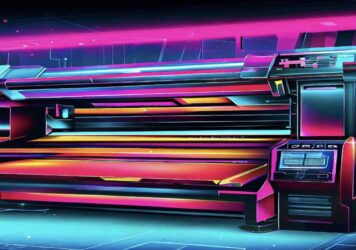Embroidery Services: Enhancing Creativity and Personalization
Angelo2025-06-21T17:01:42-06:00Embroidery has been a popular craft for centuries, providing a way to add intricate designs, patterns, and textures to various fabrics. It has evolved from being a manual handcraft to a digitized process, enabling businesses and individuals to offer embroidery services for a wide range of purposes. In this article, we will explore the world of embroidery services, their benefits, applications, and how they contribute to enhancing creativity and personalization.
Table of Contents
- Introduction: The Art of Embroidery
- The Evolution of Embroidery Services
- Applications of Embroidery Services
- Fashion and Apparel Industry
- Corporate Branding and Promotional Products
- Home Decor and Personal Accessories
- Choosing the Right Embroidery Service Provider
- Quality and Craftsmanship
- Customization Options
- Turnaround Time and Pricing
- Advantages of Embroidery Services
- Durability and Longevity
- Professional and High-Quality Finish
- Unique and Personalized Designs
- How Embroidery Services Enhance Creativity
- Versatility of Designs and Patterns
- Customization and Expression
- Collaboration and Inspiration
- Embroidery Techniques and Technology
- Traditional Hand Embroidery
- Computerized Machine Embroidery
- Appliqué and 3D Embroidery
- Caring for Embroidered Items
- Washing and Drying Guidelines
- Storage and Preservation Tips
- Conclusion
- Frequently Asked Questions
1. Introduction: The Art of Embroidery
Embroidery is a decorative technique that involves stitching thread or yarn onto fabric to create intricate designs. It has a rich history and has been practiced by various cultures around the world. What was once a time-consuming and labor-intensive process has now been transformed into a convenient service that offers endless possibilities for customization and personalization.
2. The Evolution of Embroidery Services
In the past, embroidery was predominantly done by hand, requiring skilled artisans to meticulously stitch each design. However, with advancements in technology, embroidery services have transitioned to computerized machines that can replicate complex patterns quickly and accurately. This shift has significantly increased the efficiency and accessibility of embroidery, making it more accessible to a wider audience.
3. Applications of Embroidery Services
3.1 Fashion and Apparel Industry
One of the primary industries that benefit from embroidery services is the fashion and apparel sector. Embroidered designs can add elegance, style, and uniqueness to garments, making them stand out in a crowded market. From intricate patterns on wedding dresses to logos on sports uniforms, embroidery adds a touch of sophistication to various clothing items.
3.2 Corporate Branding and Promotional Products
Embroidery services play a crucial role in corporate branding and promotional merchandise. Businesses can have their logos, slogans, or brand names embroidered on items such as caps, bags, and t-shirts. This not only helps create brand recognition but also portrays a professional image and fosters a sense of unity among employees.
3.3 Home Decor and Personal Accessories
Embroidery is not limited to clothing; it also extends to home decor and personal accessories. From embroidered cushion covers and curtains to personalized handbags and phone cases, embroidery services allow individuals to add a personal touch to their living spaces and accessories. It’s a way to showcase individuality and create a unique environment.
4. Choosing the Right Embroidery Service Provider
When considering embroidery services, it’s essential to choose the right service provider. Here are some factors to consider:
4.1 Quality and Craftsmanship
Look for a provider that values quality and craftsmanship. Examine their portfolio, customer reviews, and samples of their work to ensure they meet your expectations in terms of attention to detail and precision.
4.2 Customization Options
Flexibility in customization is crucial. A good embroidery service provider should offer a range of thread colors, design options, and the ability to work with custom designs provided by the client.
4.3 Turnaround Time and Pricing
Consider the provider’s turnaround time and pricing. Balancing quality, speed, and cost is essential. Compare quotes from different providers to find the best fit for your needs.
5. Advantages of Embroidery Services
5.1 Durability and Longevity
Embroidery is known for its durability. Unlike printed designs that may fade or peel over time, embroidered designs are woven into the fabric, ensuring longevity even after multiple washes and extended use.
5.2 Professional and High-Quality Finish
Embroidery adds a touch of professionalism and quality to any item. The raised texture and intricate stitching give a premium feel that cannot be replicated by other methods.
5.3 Unique and Personalized Designs
With embroidery services, you can bring your ideas to life. Whether it’s a monogram, a custom logo, or a personalized message, embroidery offers endless possibilities for creating unique and meaningful designs.
.
6. How Embroidery Services Enhance Creativity
6.1 Versatility of Designs and Patterns
Embroidery services offer a wide range of design options and patterns. From classic motifs to modern and abstract designs, there is something to suit every style and preference. The versatility of embroidery allows for endless creativity and experimentation.
6.2 Customization and Expression
Embroidery enables individuals to express their personality and style through custom designs. Whether it’s adding initials to a handkerchief or creating intricate artwork on a jacket, embroidery provides a medium for self-expression and individuality.
6.3 Collaboration and Inspiration
Embroidery services often involve collaboration between the client and the embroiderer. This collaborative process fosters inspiration and sparks new ideas. The embroiderer’s expertise combined with the client’s vision creates a synergy that results in truly unique and captivating designs.
7. Embroidery Techniques and Technology
7.1 Traditional Hand Embroidery
Hand embroidery is a time-honored craft that requires skilled artisans to manually stitch each design. It offers a level of detail and artistry that is difficult to replicate with machines. Hand embroidery is often favored for intricate and delicate designs that demand a high level of precision.
7.2 Computerized Machine Embroidery
Computerized machine embroidery has revolutionized the industry. Designs are created digitally and then stitched by automated machines. This method allows for faster production and can replicate complex designs with remarkable accuracy.
7.3 Appliqué and 3D Embroidery
Appliqué and 3D embroidery techniques add depth and texture to designs. Appliqué involves stitching fabric pieces onto the base fabric, creating a layered effect. 3D embroidery uses padding and specialized stitches to create raised elements, adding a three-dimensional aspect to the design.
8. Caring for Embroidered Items
To ensure the longevity of embroidered items, proper care is essential. Here are some tips:
8.1 Washing and Drying Guidelines
Follow the recommended washing instructions for the fabric to avoid damaging the embroidery. If possible, turn the item inside out before washing to protect the design. Avoid using harsh detergents or bleach that may cause discoloration.
8.2 Storage and Preservation Tips
When storing embroidered items, ensure they are clean and dry to prevent mold or mildew. Avoid folding or hanging items in direct sunlight, as prolonged exposure to UV rays can cause fading. If necessary, use acid-free tissue paper to pad delicate embroidered areas.
9. Conclusion
Embroidery services offer a unique blend of artistry, customization, and durability. Whether it’s adding elegance to fashion, promoting a brand, or personalizing home decor, embroidery enhances creativity and allows individuals and businesses to make a lasting impression. With a range of designs, techniques, and expert craftsmanship, embroidery services continue to evolve and inspire creativity in countless industries.
Frequently Asked Questions
1. Can embroidery be done on any type of fabric?
Yes, embroidery can be done on various types of fabrics, including cotton, silk, denim, and even leather. However, the choice of fabric may affect the final outcome and the techniques used.
2. How long does it take to complete an embroidered design?
The time required to complete an embroidered design depends on various factors, such as the complexity of the design, the size of the embroidery, and the embroidery technique used. Simple designs can be completed in a few hours, while intricate designs may take several days or even weeks.
3. Is embroidery suitable for large-scale production?
Embroidery can be used for both small-scale and large-scale production. Computerized embroidery machines can replicate designs quickly, making them suitable for mass production. However, the setup time and cost may be higher for large-scale projects compared to smaller, customized orders.
4. Can I provide my own design for embroidery?
Yes, many embroidery service providers allow clients to provide their own designs. You can submit your custom design or work with the embroiderer to create a design that meets your requirements.
5. What factors influence the cost of embroidery services?
The cost of embroidery services is influenced by factors such as the complexity of the design, the size of the embroidery, the type of fabric, the number of items to be embroidered, and the turnaround time required. Custom designs and specialized techniques may also affect the overall cost.





